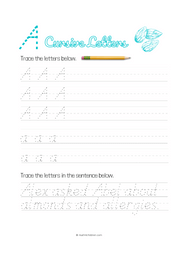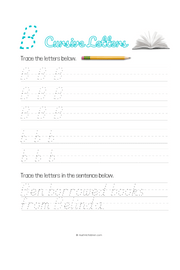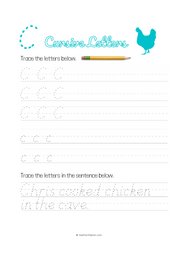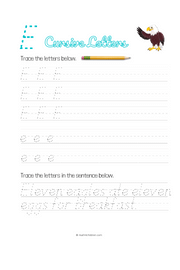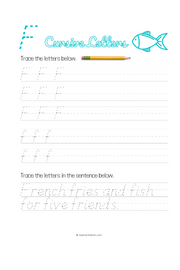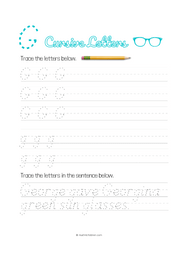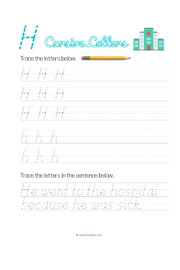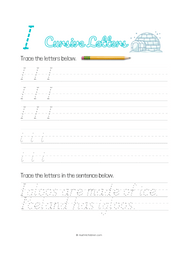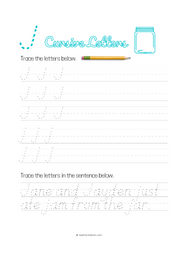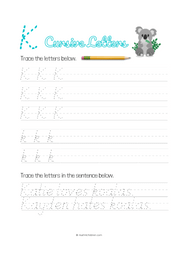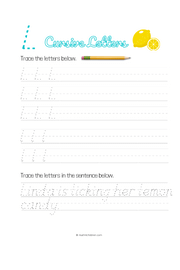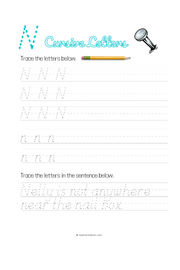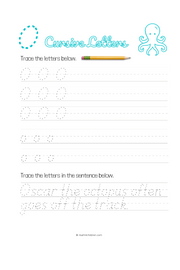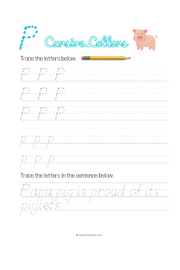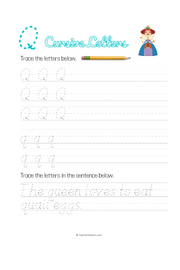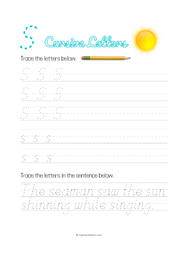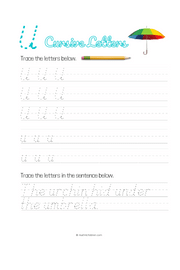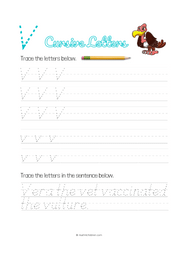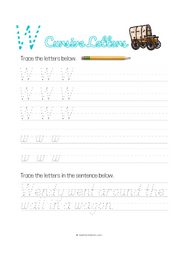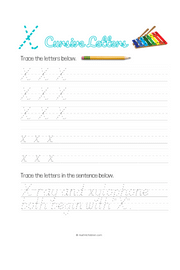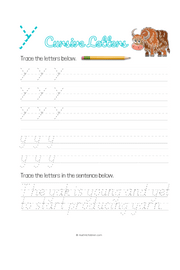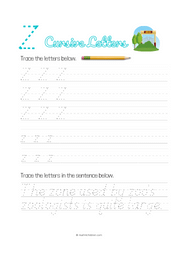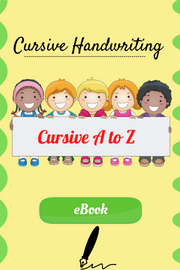Cursive writing a to z capital and small letters
Cursive writing a to z capital and small letters | cursive writing | This page features a free collection of worksheets on cursive writing for children. It features captial letters A to Z in cursive format as well as sentences in cursive letters. Each sentence uses the letter being taught more than once in a sentence. To practice, simply use a pencil to trace the letters found in each worksheet. In the first section, children are free to practice in the space allocated next to the dotted letters. Improve your handwriting skills with these worksheets. Free pdf downloads for teachers and parents of children. Cursive Letters Chart | jordan cursive |
Cursive, also known as script or longhand, is a type of handwriting that involves connecting letters together in a flowing manner. It is often associated with more formal or personal written communication, such as letters, thank you notes, and invitations. While cursive has a rich history and has played an important role in the development of written language, it has faced controversy in recent years with the increasing reliance on technology for written communication.
The origins of cursive can be traced back to ancient civilizations, such as the Greeks and Romans, who used a form of cursive to write in ink on papyrus or parchment. In the Middle Ages, monks used a form of cursive known as Carolingian minuscule to transcribe religious texts. During the Renaissance, the Italian humanist Petrarch developed a form of cursive known as humanistic script, which was widely used in the production of books and documents.
Cursive has traditionally been taught in schools as a way to improve handwriting skills and as a means of personal expression. It is often viewed as more legible and efficient than print, as the connections between letters allow for faster and smoother writing. In addition, the act of writing in cursive can be therapeutic and can even have cognitive benefits, such as improving fine motor skills and increasing brain activity in the areas responsible for thinking, language, and memory.
However, in recent years, cursive has faced challenges due to the increasing reliance on technology for written communication. With the proliferation of computers, tablets, and smartphones, fewer people are writing by hand, leading to a decline in the use of cursive. In addition, with the focus on standardized testing and the pressure to teach subjects that are considered more critical for academic success, some schools have dropped cursive from their curriculum or have reduced the amount of time devoted to teaching it.
Despite these challenges, cursive has remained an important part of written communication for many people. It is often used for personal letters, thank you notes, and other types of correspondence that require a more formal or personal touch. Cursive is also often used in the production of documents such as certificates, diplomas, and other official documents that require a more formal and legible style of handwriting.
In recent years, there has been a resurgence of interest in cursive, with some schools and educators working to bring it back into the classroom. In 2013, the Common Core State Standards Initiative, a group that develops education standards for states in the US, released a set of standards that included the teaching of cursive. In addition, some educators have argued that cursive is an important part of cultural and historical literacy and that it should be taught to students as a way to understand and appreciate the past.
Despite the challenges that cursive has faced in recent years, it remains an important part of written communication for many people. It is a beautiful and expressive way of writing that has a rich history and has played a vital role in the development of written language. Whether you are writing a personal letter, a thank you note, or an official document, cursive is a timeless and elegant way to convey your thoughts and feelings on paper.
Cursive handwriting worksheets for children
This collection is the ultimate free handwriting pack for every educator. These can be used at home or in school to supplement your child's regular school course. Each sheet can be printed out multiple times and used until a child masters a particular skill. In each worksheet, there is a capital letter in cursive form to trace. Below it, there is a cursive letter in lower case. The very last section of each worksheet contains a sentence written in cursive form. After practicing with your kids using these worksheets, running writing will become a thing of the past. Children will love these worksheets and improve not only their writing skills but also their English vocabulary since each sheet contains a picture of the nouns used in the sentences to be traced below. Have fun learning and remember to share. Read a full article on Why Cursive Is Important
Why is it important to teach children cursive handwriting ?
Have you ever thought about the early calligraphers how they used to spend time writing letters in cursive form? Back in the days, cursive writing played a very important role in writing documents like passports. Although the use of computers in writing has taken over a lot of writing on paper, cursive writing still occupies an important place in academic settings. This is so because people don’t generally write individual separate letters when they are writing an essay or taking down notes at a meeting or conference. They write in a connected manner. This is not just for the fancy of it; cursive handwriting increases the speed of a writer.
When running writing becomes a part and parcel of our writing style, it becomes difficult to revert to the way we used to write when we were younger. However, if you over do it, your writing could become hard to read. It is therefore important for parents and teachers to teach students cursive writing in the right way. That is why these worksheets come in handy; they contain the individual letters as well as the letters used naturally in sentences. Children will trace the letters in both scenarios in order to familiarize themselves with this skill. After this skill is mastered, get more practice by rewriting sections of any story book using the same strategy.
To use these worksheets, you can preview each in the link below before printing just to make sure that it corresponds to the skill you are in search of. If that is the case, hit the print sheet button and print it out on a printer. If you prefer the complete A to Z pack, head over to the ebook cover below and hit the download button. If you find these useful, please remember to share.
Handwriting for Kids - How to Write in Cursive From A to Z
The first lesson in learning how to write in cursive is learning how to write the capital Z. The letter starts slightly below the top line, and has a tail that extends to the right. This is an upper-case example of a capital Z. You can practice this technique by connecting the tail to the next letter. This is another example of a capital Z in cursive writing. If you can master this technique, you can easily master other letters in the alphabet.
Practice is the best way to learn how to write in cursive. The first step is to start practicing. You can use worksheets to help your child learn to write in cursive. By using worksheets, they will be able to develop a sense of letter and cursive alphabet. You can also teach them how to space and align the capital and small letters. Using the capital and small letter outlines, they will learn the entire alphabet and word spacing. You can also teach your child how to write in cursive by using the letters A to Z.
Regardless of your child's age, cursive worksheets are a great way to help your child learn the alphabet and make it look good. The free worksheets contain capital and small letters that will help your child develop letter sense. In addition to helping your child learn how to write letters in cursive, they will also help them develop their understanding of the alphabet. Then, they will be able to use the capital and small letter to create words and sentences. You can also practice cursive j and b by creating sentences with the letters on these pages.
You can also print a free printable cursive writing practice sheet for kindergarten through fourth grade students. There are dotted lines that can help your child trace the letters while the blank writing lines can be used to practice writing the letters on their own. When your child has mastered the basic skills of cursive, you can use the practice sheets to help them learn how to use sentences with the letters. After all, the more you write, the more confident your child will become.
Using the capital and small letter sets for practice is an excellent way to introduce cursive letters to your child. By using these sheets, you can practice spacing and aligning the letters correctly. The alphabet and lowercase letter charts will help your child understand how to use the capital and lowercase letters properly. This will also help your child learn how to write words in the cursive alphabet. These worksheets will also help your child learn to make sentences in their own handwriting.
The best way to learn to write in cursive is to practice writing on free printable worksheets. Children's workbooks will provide children with practice writing at their own pace and interest. In addition, they will learn to read and write in cursive alphabet as well as the capital and small letter. This will not only improve their letter-to-letter correspondence, but it will also improve their comprehension of the capital and lowercase letters.
The capital and lowercase capital and small letter worksheets will teach your child how to write in cursive. These worksheets are an excellent way for your child to practice each letter separately. While the lowercase capital and small letters are difficult to master, it is important to practice them in cursive in order to build their confidence and skills. The a-to-z set includes a page that teaches them the letter j as well as the alphabet in general.
Kids should be encouraged to practice the alphabet in cursive. The a-to-z worksheets should be easy to use, as they will allow your child to learn at their own pace. This set is designed to help kids learn to write in cursive without making any spelling errors. The a-to-z handwriting worksheets will help your child develop his or her letter sense and build a strong foundation for learning the letters.

